Main menu
Common skin conditions

NEWS
Join DermNet PRO
Read more
Quick links
Author: Vanessa Ngan, Staff Writer, 2005. DermNet Update October 2021
Introduction
Demographics
Causes
Clinical features
Complications
Differential diagnoses
Diagnosis
Treatment
Outcome
Bazex-Dupré-Christol syndrome is a rare genodermatosis characterised by the triad of congenital hypotrichosis and follicular atrophoderma, with subsequent development of multiple basal cell carcinomas. It is categorised as an 'ectodermal dysplasia with an hereditary tumour' syndrome.
It is sometimes called 'follicular atrophoderma-basal cell carcinoma' and 'Bazex syndrome'; the latter is best avoided as acrokeratosis neoplastica is also known as 'Bazex syndrome', an unrelated rare paraneoplastic syndrome.
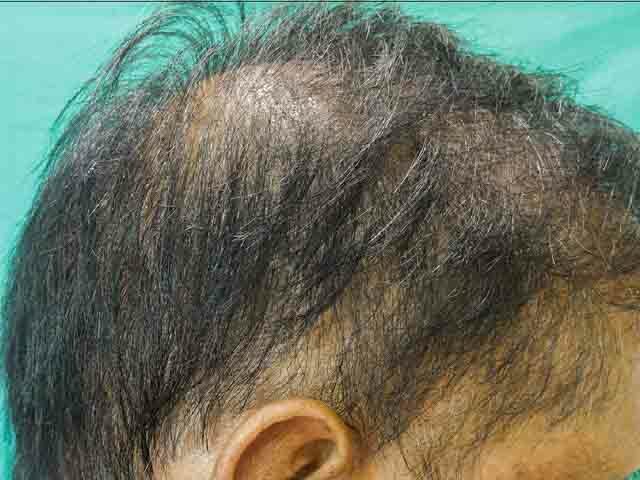
Bazex‑Dupré‑Christol syndrome: hypotrichia
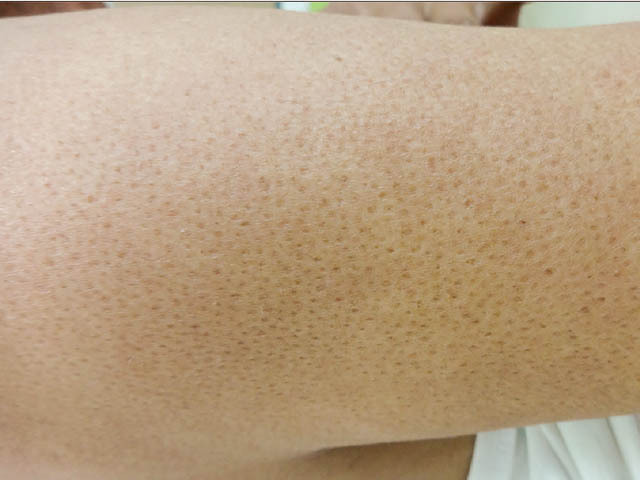
Bazex‑Dupré‑Christol syndrome: follicular atrophoderma
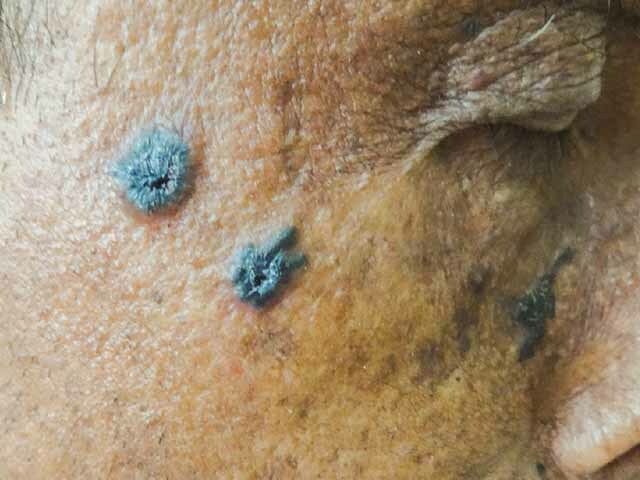
Bazex‑Dupré‑Christol syndrome: pigmented basal cell carcinomas
Images from: Chauhan P, Meena D, Dhanta A, Kansal NK, Durgapal P. Bazex-Dupré-Christol syndrome: first report in an Indian family. Indian J Dermatol Venereol Leprol. 2018;84(4):451–6.
Bazex-Dupré-Christol syndrome is rare, reported in approximately 20 families worldwide. Males and females are equally affected, but male-to-male inheritance does not occur. Sporadic cases have been described.
Bazex-Dupré-Christol syndrome is an X-linked dominant inherited disorder. This means 50% of children of an affected female, and all daughters of an affected male will inherit the syndrome.
Bazex-Dupré-Christol syndrome results from a mutation in the ACTRT1 gene causing depletion of the tumour suppressor ARP-T1, a non-coding mRNA. ARP-T1 is required for the assembly of cilia, microtubule organelles.
Bazex-Dupré-Christol syndrome typically shows some clinical features at birth, although these may not always be recognised at that time. Males tend to always have severe disease whereas females can show a range of severity.
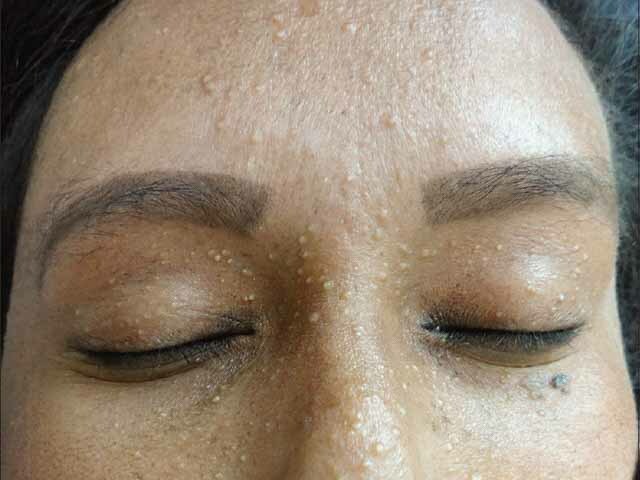
Bazex‑Dupré‑Christol syndrome: facial milia
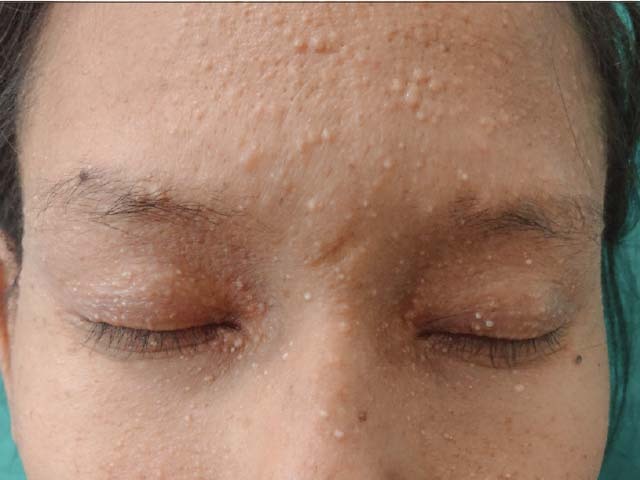
Bazex‑Dupré‑Christol syndrome: facial milia
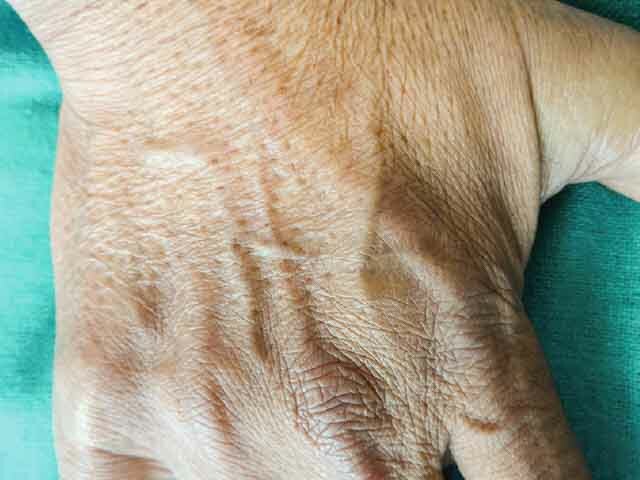
Bazex‑Dupré‑Christol syndrome: follicular atrophoderma
Images from: Chauhan P, Meena D, Dhanta A, Kansal NK, Durgapal P. Bazex-Dupré-Christol syndrome: first report in an Indian family. Indian J Dermatol Venereol Leprol. 2018;84(4):451–6.
Bazex-Dupré-Christol syndrome is a clinical diagnosis and should be considered in patients with early-onset or familial basal cell carcinomas. Follicular atrophoderma should be looked for carefully as this is an early sign easily missed.
Basal cell carcinomas continue to develop lifelong. There is no association with internal malignancies.